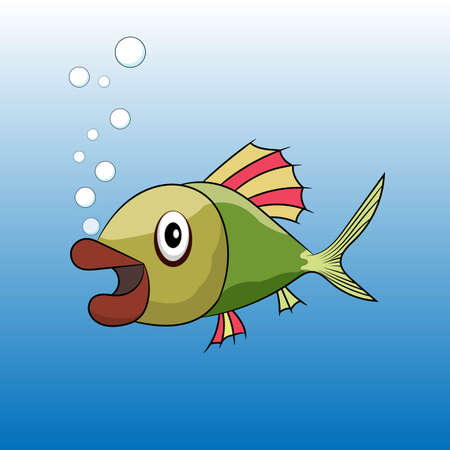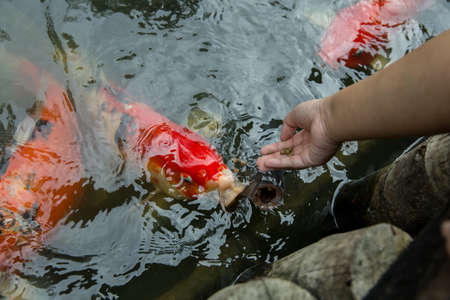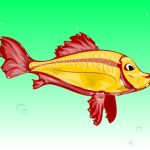1. Understanding Surface Disturbances
When youre out on the water, one of the best ways to find where fish are feeding is by watching the surface. Whether youre fishing a lake, river, or along the coast, different types of surface activity can give you valuable clues about what’s going on below. Learning how to read these signs is key to becoming a more successful angler.
Why Surface Activity Matters
Fish often chase baitfish or insects near the surface when they’re feeding. This creates visible disturbances like ripples, splashes, and boils. Recognizing these patterns can help you cast in the right spot at the right time.
Common Types of Surface Disturbances
Here’s a quick guide to some of the most common types of surface activity you might see and what they usually mean:
| Surface Disturbance | Description | What It Means | Where Youll See It |
|---|---|---|---|
| Boils | Circular patches of swirling water without splashes | Fish are actively feeding just below the surface | Lakes, rivers, coastal flats |
| Jumping Baitfish | Baitfish leaping from the water in groups | Predators like bass or redfish are attacking from below | Lakes and inshore saltwater areas |
| Splashing or Slashing | Loud splashes or aggressive swipes at the surface | Topwater strike zone—great for topwater lures | Shallow lakes, river edges, coastal shallows |
| Nervous Water | Slight ripples that move in a direction against wind or current | Baitfish schools being pushed by predators underneath | Bays, estuaries, calm lake coves |
| Bird Activity | Diving birds or birds hovering over specific areas | Baitfish are near the surface; predators likely nearby too | Coastal waters, large lakes, river mouths |
Reading Water in Different Environments
Lakes
In stillwater environments like lakes and ponds, look for subtle signs such as small boils and nervous water. Early morning and late evening are prime times when fish move shallow to feed.
Rivers and Streams
Current plays a big role here. Feeding zones often form near eddies, behind rocks, or where faster water meets slower pools. Splashing and jumping bait can signal trout or smallmouth actively hunting.
Coastal Waters
Saltwater species like striped bass and redfish often push bait into shallow flats or shorelines. Watch for diving birds and fast-moving nervous water—both are signs of active feeding schools.
The Key Is Observation
The more time you spend watching the water before making your first cast, the better your chances of hooking up. Bring a good pair of polarized sunglasses—they’ll help you spot subtle movements and underwater shadows too.
Quick Tips:
- Stay quiet: Sudden noise can scatter baitfish and spook predators.
- Match your lure: Choose something that mimics what the fish are already chasing.
- Follow the birds: If seagulls or terns are diving repeatedly in one area, it’s worth checking out.
- Watch wind direction: Wind can push bait toward certain shorelines—feeding fish often follow.
This is just the beginning of learning how to read feeding zones by surface disturbances. As you gain experience on different bodies of water, your eyes will naturally pick up on these signs faster—and so will your catch rate.
2. Common Signs of Feeding Fish
When youre out on the water, one of the best ways to locate feeding zones is by watching for specific surface disturbances. These visual clues can help you pinpoint where fish are actively feeding, so you can cast your line in the right place at the right time. Here are some common signs to look out for:
Splashing and Surface Strikes
One of the most obvious indicators of feeding activity is splashing on the surface. This could be from predatory fish like bass or stripers chasing baitfish. If you see sudden splashes or a series of quick surface strikes, its likely theres a feeding frenzy going on beneath the surface.
Boils and Swirls
Boils appear when fish swim close to the surface, disturbing the water without fully breaking it. These movements create circular ripples or bulges that look like the water is “boiling.” Swirls often occur after a fish has just missed its prey or is turning sharply just under the surface.
Baitfish Behavior
Baitfish will often behave erratically when predators are nearby. Look for tight bait balls, jumping minnows, or flashes of silver just under the water’s surface. When small fish are skipping across the water or darting in all directions, it usually means something bigger is chasing them.
Bird Activity
Seagulls, terns, and other birds are great indicators of feeding fish. Birds diving into the water or hovering over a specific area often signal active bait schools with predators underneath. Keep an eye on bird movement—if theyre circling or diving repeatedly in one spot, thats a prime location to investigate.
Quick Reference: Visual Clues and What They Mean
| Visual Clue | Description | What It Indicates |
|---|---|---|
| Splashing/Surface Strikes | Sudden bursts on the water surface | Predators attacking baitfish near the top |
| Boils/Swirls | Circular ripples or rolling water movements | Fish feeding just below the surface |
| Baitfish Movement | Tight schools, jumping, flashing silver bodies | Baitfish fleeing from predators |
| Bird Activity | Diving birds or flocks hovering over water | Bait presence and potential predator activity below |
Pro Tip:
If you spot multiple signs in one area—like birds diving while baitfish scatter and splashes break the surface—you’ve likely found a hot feeding zone. Get your lure in there fast!

3. Reading Water Conditions
Understanding how to read water conditions is a key skill in identifying feeding zones by observing surface disturbances. These surface signs can tell you a lot about where fish are actively feeding. Several environmental factors influence how and where these disturbances appear, including current, wind patterns, light levels, and water temperature.
Current
Currents move food through the water and naturally attract fish. In rivers or streams, look for eddies or current breaks—places where fast-moving water meets slower water. These areas often collect debris and insects, making them prime feeding zones. In lakes, subtle underwater currents can also create surface ripples or slicks that signal baitfish movement.
Wind Patterns
Wind plays a big role in shaping surface conditions. A steady breeze can push plankton and baitfish toward the downwind side of a lake, bringing game fish along with them. Look for wind-blown shorelines where surface chop may be more pronounced—this is often where active feeding occurs.
Wind Direction vs Likely Feeding Areas
| Wind Direction | Likely Feeding Zone |
|---|---|
| North Wind | Southern shoreline |
| South Wind | Northern shoreline |
| East Wind | Western shoreline |
| West Wind | Eastern shoreline |
Light Levels
Fish behavior changes with light. Early morning and late afternoon often bring increased activity near the surface due to lower light intensity. On cloudy days, fish may feed near the surface longer because they feel less exposed. Pay attention to how light reflects off the water—a shimmer or flash can indicate baitfish or predator movement just below the surface.
Water Temperature
Temperature affects both fish metabolism and baitfish location. Warmer temperatures tend to push fish deeper during midday but may bring them back up during early morning or evening when surface waters cool slightly. Some species prefer certain temperature ranges, so using a thermometer can help predict where theyll be holding.
Common Game Fish Temperature Preferences
| Fish Species | Preferred Temp (°F) | Feeding Behavior |
|---|---|---|
| Largemouth Bass | 65–75°F | Feeds aggressively near surface in early morning/evening |
| Trout | 50–60°F | Stays near cooler, oxygen-rich zones; surfaces more in spring/fall |
| Panfish (Bluegill/Crappie) | 70–80°F | Loves warm shallows; visible topwater action common in summer |
The more you pay attention to these natural cues, the better you’ll get at reading the water like a seasoned angler. Surface disturbances aren’t random—they’re signals that tell a story about what’s happening below the surface.
4. Species-Specific Surface Behavior
When youre trying to identify feeding zones by watching surface disturbances, its important to understand that different species of sport fish behave differently on the waters surface. Recognizing these unique patterns can help you figure out what kind of fish is feeding and how best to target them.
Bass: Aggressive Surface Strikes
Largemouth and smallmouth bass are known for their explosive topwater strikes. They often attack baitfish near the surface with a loud splash, especially during early morning or late evening hours. You might see sudden boils, swirls, or even airborne leaps when bass are actively feeding.
Look for:
- Sharp splashes near cover like lily pads or submerged logs
- Boils in shallow coves or around docks
- Quick, aggressive movement followed by silence
Trout: Subtle and Precise Rises
Trout tend to feed more delicately at the surface, especially when they’re sipping insects during a hatch. Their rises may look like gentle rings or dimples on calm water. Unlike bass, they rarely make a big commotion unless chasing emergers.
Look for:
- Small circular ripples (rise rings) in calm water
- Consistent activity in one area during insect hatches
- Occasional fin or back breaking the surface
Redfish: Wakes and Tailing
In coastal waters, redfish display distinctive surface behavior when feeding in shallow flats. You’ll often see them “tailing”—when their tails break the surface as they root around for crustaceans—or creating wakes as they move in skinny water.
Look for:
- Muddy streaks or puffs from stirred-up bottom sediment
- S-shaped wakes moving steadily across shallow flats
- Tails flicking above the waterline during low tide
Behavior Comparison Table
| Species | Surface Behavior | Typical Feeding Signs | Best Time to Observe |
|---|---|---|---|
| Bass (Largemouth/Smallmouth) | Aggressive strikes & jumps | Splashing, boils, sudden movement | Dawn & Dusk |
| Trout | Subtle rises & sips | Dimpling rings, gentle ripples | During insect hatches (morning/evening) |
| Redfish | Tailing & cruising wakes | Muddy puffs, visible fins/tails, steady wakes | Low tide on shallow flats |
By learning how different fish species behave on the surface, you can better pinpoint where theyre actively feeding. This knowledge helps you not only choose the right spot but also match your presentation style to mimic natural prey behavior.
5. When and Where to Cast
Once you’ve spotted surface disturbances that suggest active feeding zones, the next step is knowing when and where to cast your line. Success often comes down to timing, positioning, and casting accuracy. Let’s break it down so you can make the most of those surface cues.
Timing Your Cast
Fish feeding on the surface are often on the move, especially when chasing baitfish. Casting too early or too late might mean missing your window of opportunity. Heres how to improve your timing:
- Wait for consistent activity: Don’t rush. Watch for repeated splashes or swirls in a spot before casting.
- Cast just ahead of the action: Anticipate the direction fish are moving and place your lure slightly ahead to intercept them naturally.
- Avoid spooking fish: Sudden movements or casting directly into the middle of a school can send them diving.
Positioning Yourself
Your location relative to the feeding zone can make a big difference. Consider wind, current, and sunlight direction to find the best angle of approach.
| Condition | Best Positioning Tip |
|---|---|
| Windy Day | Position yourself upwind so your cast lands softly with the wind’s help |
| Strong Current | Stay downstream and cast upstream for a natural drift |
| Bright Sunlight | Keep the sun at your back to reduce glare and avoid casting shadows over fish |
Casting Techniques That Work
Casting into a feeding zone isn’t just about distance—it’s about control and subtlety. Here are some tips to get it right:
- Use sidearm casts: These help keep your profile low and reduce splash upon impact.
- Try skipping lures: Especially useful near docks or under overhangs where fish might ambush prey.
- Match your lure size: Use a lure that mimics the size of the baitfish being chased at the surface.
Quick Tips for Maximizing Success
- Always observe first—watch for birds diving or baitfish jumping as extra clues.
- If activity slows down, try changing lure color or retrieval speed.
- Practice casting accuracy—it matters more than distance in many feeding scenarios.
Mastering when and where to cast based on surface activity takes time, but with these tips, youll be one step closer to landing more fish during those high-action moments.


